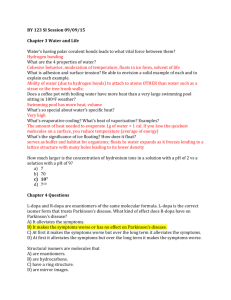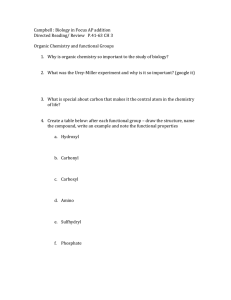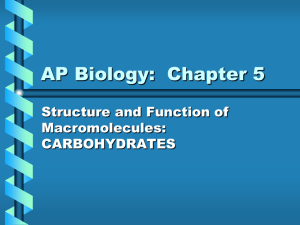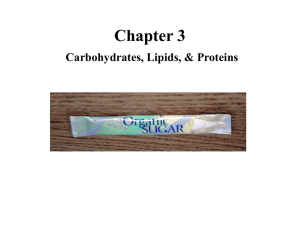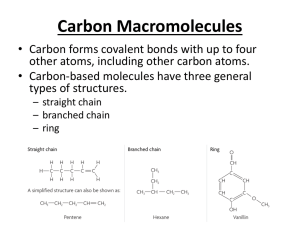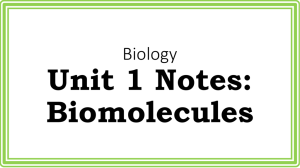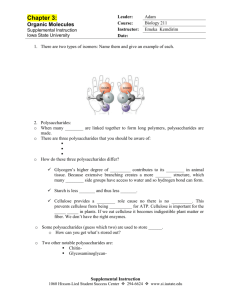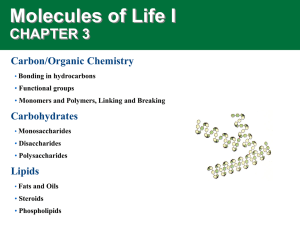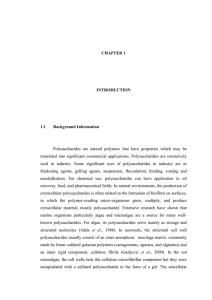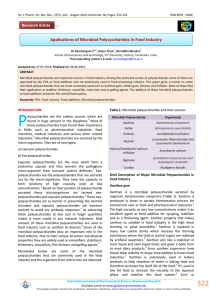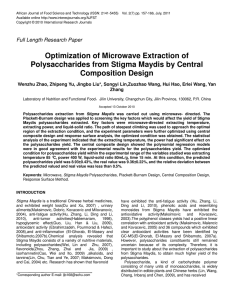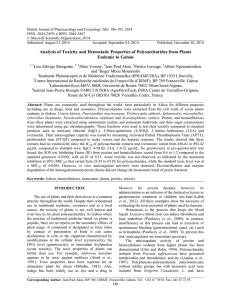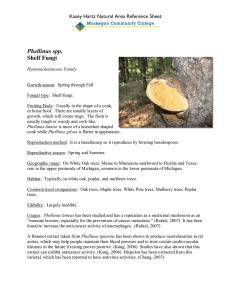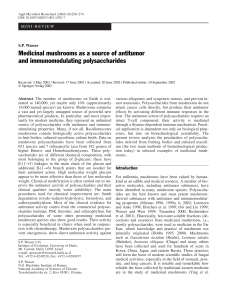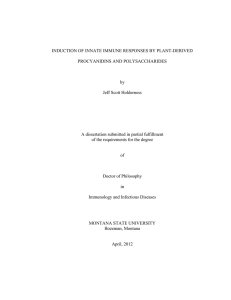BY 123 SI Session 09/09/15 Chapter 3 Water and Life Water's
advertisement
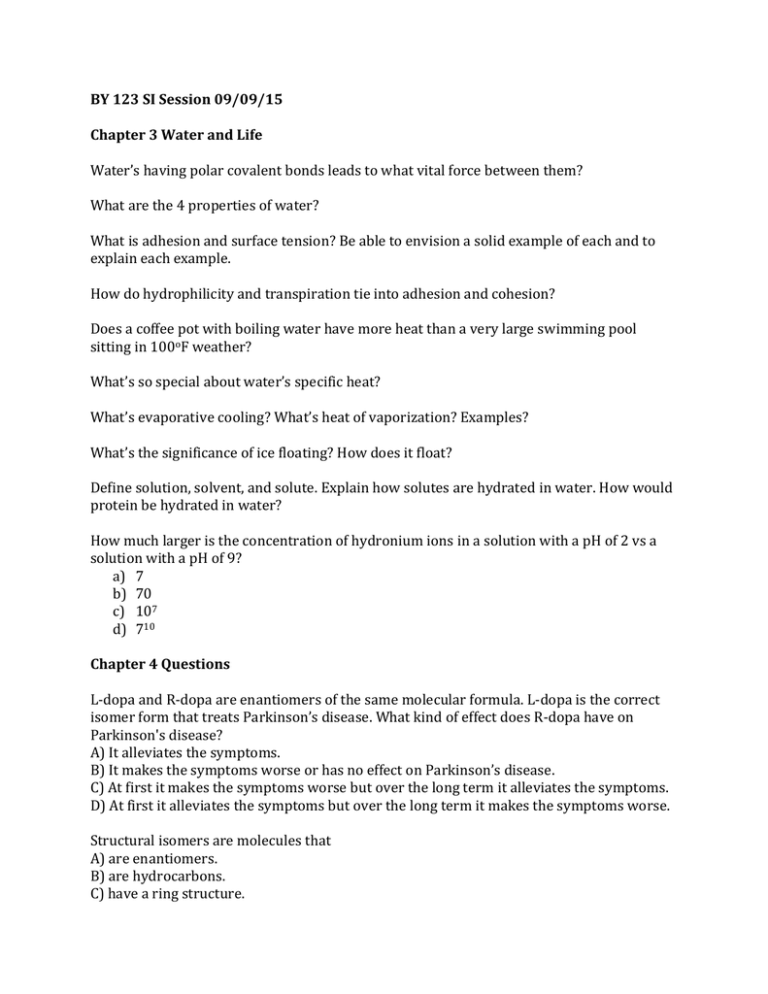
BY 123 SI Session 09/09/15 Chapter 3 Water and Life Water’s having polar covalent bonds leads to what vital force between them? What are the 4 properties of water? What is adhesion and surface tension? Be able to envision a solid example of each and to explain each example. How do hydrophilicity and transpiration tie into adhesion and cohesion? Does a coffee pot with boiling water have more heat than a very large swimming pool sitting in 100oF weather? What’s so special about water’s specific heat? What’s evaporative cooling? What’s heat of vaporization? Examples? What’s the significance of ice floating? How does it float? Define solution, solvent, and solute. Explain how solutes are hydrated in water. How would protein be hydrated in water? How much larger is the concentration of hydronium ions in a solution with a pH of 2 vs a solution with a pH of 9? a) 7 b) 70 c) 107 d) 710 Chapter 4 Questions L-dopa and R-dopa are enantiomers of the same molecular formula. L-dopa is the correct isomer form that treats Parkinson’s disease. What kind of effect does R-dopa have on Parkinson's disease? A) It alleviates the symptoms. B) It makes the symptoms worse or has no effect on Parkinson’s disease. C) At first it makes the symptoms worse but over the long term it alleviates the symptoms. D) At first it alleviates the symptoms but over the long term it makes the symptoms worse. Structural isomers are molecules that A) are enantiomers. B) are hydrocarbons. C) have a ring structure. D) are mirror images. E) differ in the covalent arrangements of their atoms. Which of these functional groups does not contain oxygen? A) carboxyl B) sulfhydryl C) hydroxyl D) carbonyl E) phosphate The gasoline consumed by an automobile is a fossil fuel consisting mostly of A) aldehydes. B) amino acids. C) alcohols. D) hydrocarbons. E) thiols. Which functional group is most likely to be responsible for an organic molecule behaving as a base? A) hydroxyl B) carbonyl C) carboxyl D) amino E) phosphate Learn isomers and functional groups. Chapter 5 What are the 4 macromolecules? The 4 macromolecules are all known as polymers as well. T/F Define polymer. How are monomers connected to each other? How are polymers disassembled to monomers? How many water molecules are needed to hydrolyze a polymer that is 5 monomers long? Sugars, monosaccharides, and polysaccharides are also called carbohydrates. T/F What is the bond between two conjoined monosaccharides called? If sugars are made up of carbon, hydrogen, and oxygen, how are they all soluble in water? What are the two types of polysaccharides discussed in class? What are plants’ storage polysaccharides called? What two forms are there? Animals’ storage polysaccharides? What are plants’ structural polysaccharides called? Why can’t we digest it? Study figures 5.7 and 5.8. Why is cellulose so strong, cable-like, and never branched? T/F No organism can digest or hydrolyze cellulose. What are two uses of chitin, a structural polysaccharide?
